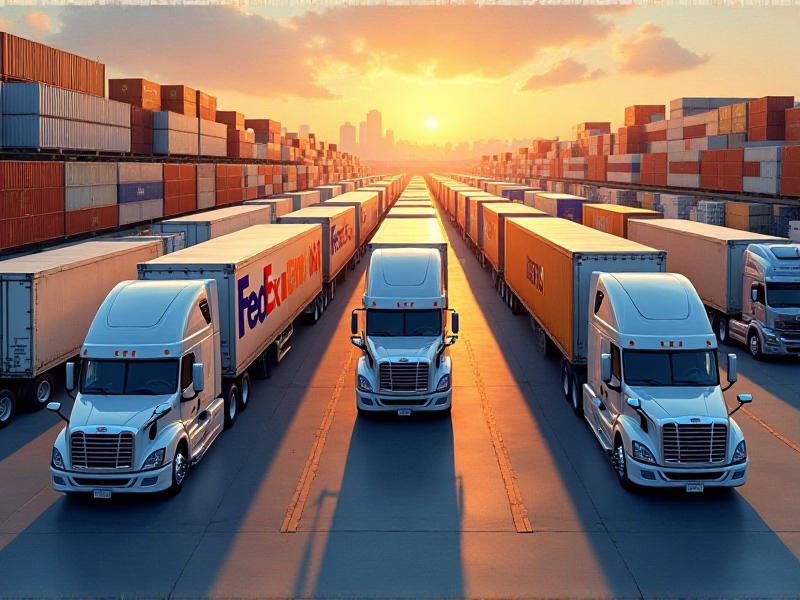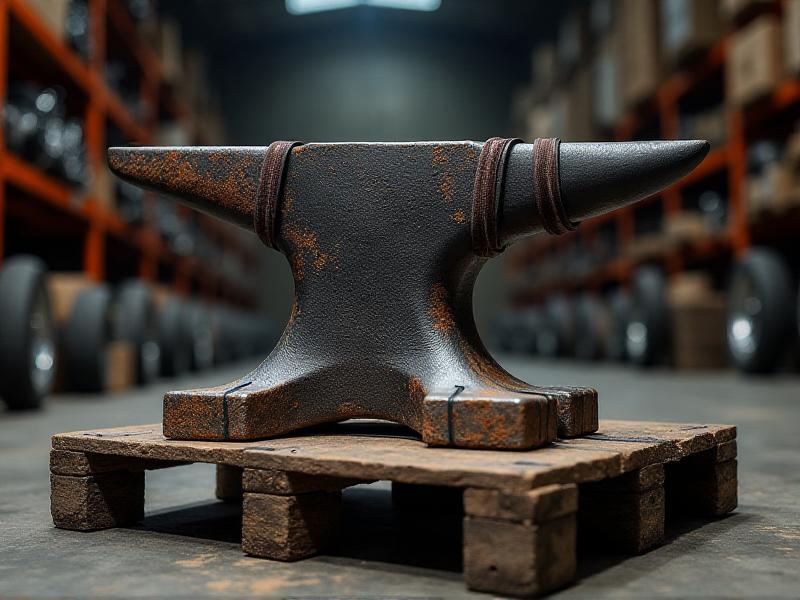Shipping Heavy Anvils Cost-Effectively
Understanding the Challenges of Shipping Heavy Anvils
Shipping heavy anvils is no small feat. These hefty tools, often weighing hundreds of pounds, present unique logistical challenges. From ensuring safe handling to minimizing transportation costs, every step requires careful planning. One of the primary concerns is the weight itself. Standard shipping carriers often have weight limits, and exceeding these can result in hefty surcharges. Additionally, the density and shape of anvils make them difficult to package securely, increasing the risk of damage during transit.
Another challenge is the cost. Heavy items like anvils require specialized handling and equipment, which can drive up shipping expenses. For businesses or individuals looking to ship anvils cost-effectively, understanding these challenges is the first step toward finding viable solutions. By identifying the pain points—such as weight restrictions, packaging needs, and carrier limitations—you can begin to explore strategies to mitigate these issues.

Choosing the Right Shipping Carrier
Selecting the appropriate shipping carrier is crucial when transporting heavy anvils. Not all carriers are equipped to handle such weight, and those that do may charge a premium. Freight carriers, for instance, are often better suited for heavy items than standard parcel services. Companies like FedEx Freight, UPS Freight, and specialized logistics providers offer services tailored to heavy and oversized items.
When evaluating carriers, consider factors such as weight limits, pricing structures, and delivery timelines. Some carriers offer flat-rate options for heavy items, which can be more cost-effective than paying by weight. Additionally, look for carriers with experience in handling industrial or heavy equipment, as they are more likely to have the necessary infrastructure and expertise to ensure safe delivery.
It’s also worth exploring regional carriers, which may offer more competitive rates for local or domestic shipments. By comparing multiple options and negotiating rates, you can find a carrier that balances cost and reliability, making the shipping process more efficient and affordable.

Packaging Solutions for Heavy Anvils
Proper packaging is essential to protect heavy anvils during transit. Given their weight and density, anvils can cause damage to themselves or other items if not secured correctly. Start by selecting a sturdy pallet that can support the anvil’s weight. Wooden pallets are a popular choice, but reinforced plastic or metal pallets may be necessary for exceptionally heavy items.
Once the anvil is placed on the pallet, use heavy-duty strapping or shrink wrap to secure it in place. This prevents movement during transit, reducing the risk of damage. For added protection, consider wrapping the anvil in bubble wrap or foam padding before securing it to the pallet. This can help absorb shocks and vibrations during transportation.
Labeling is another critical aspect of packaging. Clearly mark the package as “Heavy” or “Fragile” to alert handlers to exercise caution. Include handling instructions, such as “Use Forklift Only,” to ensure the package is moved safely. By investing in robust packaging materials and techniques, you can minimize the risk of damage and avoid costly returns or replacements.

Cost-Effective Shipping Strategies
Shipping heavy anvils doesn’t have to break the bank. By adopting cost-effective strategies, you can reduce expenses without compromising on quality. One approach is to consolidate shipments. If you’re shipping multiple anvils or other items, combining them into a single shipment can lower overall costs. Freight carriers often offer discounts for larger loads, making consolidation a smart choice.
Another strategy is to optimize packaging. While it’s essential to protect the anvil, over-packaging can add unnecessary weight and volume, increasing shipping costs. Use materials that provide adequate protection without being excessive. Additionally, consider the dimensions of the package. Carriers often use dimensional weight pricing, so a compact package can save money even if the item is heavy.
Timing can also impact costs. Shipping during off-peak seasons or days may result in lower rates, as carriers have more available capacity. Planning ahead and booking shipments in advance can also help secure better rates. By implementing these strategies, you can make shipping heavy anvils more affordable and efficient.
Leveraging Technology for Efficient Shipping
Technology plays a vital role in streamlining the shipping process for heavy anvils. Shipping management software can help you compare rates, track shipments, and manage logistics more effectively. These tools often integrate with multiple carriers, allowing you to choose the best option for each shipment. They also provide real-time updates, so you can monitor the progress of your delivery and address any issues promptly.
Another technological solution is the use of automated packaging systems. These systems can calculate the optimal packaging dimensions and materials for your anvil, reducing waste and costs. Additionally, they can generate labels and documentation automatically, saving time and minimizing errors.
For businesses shipping anvils regularly, investing in a transportation management system (TMS) can be beneficial. A TMS offers advanced features like route optimization, carrier performance analysis, and freight audit capabilities. By leveraging these technologies, you can enhance efficiency, reduce costs, and improve the overall shipping experience.
Navigating International Shipping for Heavy Anvils
Shipping heavy anvils internationally introduces additional complexities, such as customs regulations, import duties, and longer transit times. To navigate these challenges, start by researching the destination country’s import requirements. Some countries may have restrictions on heavy items or require specific documentation, such as certificates of origin or safety compliance.
Working with a freight forwarder can simplify the process. These professionals specialize in international shipping and can handle customs clearance, documentation, and coordination with carriers. They also have expertise in navigating the regulatory landscape, ensuring your shipment complies with all applicable laws.
When shipping internationally, consider the mode of transportation. Air freight is faster but significantly more expensive, while sea freight is more cost-effective but slower. For heavy anvils, sea freight is often the preferred option due to its affordability and capacity for large, heavy items. However, if time is a critical factor, air freight may be worth the investment.
Ensuring Safe Delivery of Heavy Anvils
Safety is paramount when shipping heavy anvils, both for the item and the handlers involved. Start by ensuring the anvil is securely packaged and labeled, as discussed earlier. Additionally, communicate with the carrier about any special handling requirements. For example, specify if the package requires a forklift or other equipment for loading and unloading.
Insurance is another critical consideration. While carriers take precautions, accidents can happen. Insuring your shipment provides financial protection in case of damage or loss. Many carriers offer insurance options, but you can also purchase third-party insurance for additional coverage.
Finally, track your shipment throughout the process. Most carriers provide tracking information, allowing you to monitor the package’s progress and address any issues promptly. By prioritizing safety and taking proactive measures, you can ensure your heavy anvil arrives at its destination intact and on time.
Exploring Alternative Shipping Methods
While traditional carriers are a common choice for shipping heavy anvils, alternative methods can also be effective. One option is to use a peer-to-peer shipping platform. These platforms connect shippers with individuals or businesses that have extra space in their vehicles or containers. This can be a cost-effective solution, especially for one-off shipments.
Another alternative is to work with a specialized logistics provider. These companies focus on transporting heavy or oversized items and often have the expertise and equipment to handle anvils efficiently. They may also offer customized solutions, such as door-to-door delivery or white-glove service, which includes unpacking and setup.
For local shipments, consider using a flatbed truck or a heavy-duty van. These vehicles are designed to carry large, heavy items and can be more affordable than traditional freight services. By exploring these alternative methods, you can find a shipping solution that meets your needs and budget.
Maximizing Customer Satisfaction in Heavy Anvil Shipping
Customer satisfaction is key when shipping heavy anvils, whether you’re a business or an individual. Start by setting clear expectations regarding delivery timelines and costs. Provide accurate quotes and communicate any potential delays upfront. Transparency builds trust and reduces the likelihood of disputes.
Offer tracking information to your customers, so they can monitor the progress of their shipment. This not only provides peace of mind but also allows them to plan for the delivery. Additionally, consider offering additional services, such as white-glove delivery or installation, to enhance the customer experience.
Finally, follow up after the delivery to ensure the customer is satisfied. Address any concerns promptly and use feedback to improve your shipping process. By prioritizing customer satisfaction, you can build a positive reputation and foster long-term relationships with your clients.








